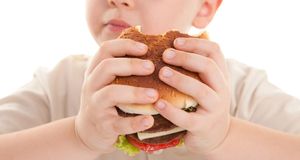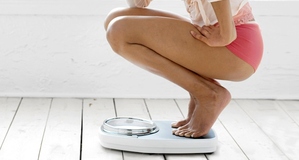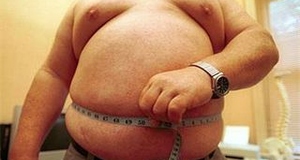|
Weight Bias and Anti-Fat Attitudes: Sources, Impacts, and Prevention Methods
The number of overweight and obese individuals in the United States has steadily increased over the last decade (CDC, 2012). According to the Food Research and Action Center, over two-thirds of adults in the United States are either overweight or obese (2010). The Academy of Nutrition and Dietetics (2013) states that individuals who are overweight fall within a body mass index range of 25-29.9 and individuals who are obese fall within a body mass index range of 30 and above. Meanwhile, the social environment places a heavy emphasis on dieting and the importance of being thin (Brownell, 1991). Despite the increasing rates of overweight and obese populations, weight based prejudice, also known as weight bias, is still broadly prevalent within our society (Diedrichs & Barlow, 2011).
Weight bias can include negative attitudes, beliefs, and discrimination toward overweight and obese individuals (Puhl & Heuer, 2009). The engagement of such attitudes or beliefs can result in the perception of such individuals as lesser or devalued human beings and can lead to these individuals being treated differently than those of a more ‘acceptable’ weight. The concept of weight bias is closely linked to “antifat attitudes,” or the negative thoughts, feelings, and assumptions individuals possess regarding overweight or obese individuals (Crandall, 1994). These assumptions often involve stereotyping overweight individuals as “lazy,” “undisciplined,” or “unintelligent” (Schwartz, Chambliss, Brownell, Blair, & Billington, 2003).

Weight bias often occurs in places where overweight individuals might assume they would be free from judgment, including within the health system, college admissions process, and during the hiring process (Teachman & Brownell, 2001; Canning & Mayer, 1966; Rothblum, Brand, Miller, & Oetjen, 1990). Biases from health care professionals can influence the type of care an overweight or obese individual may receive, while biases from university admissions professionals and hiring employers can result in individuals not being accepted for university or employment positions.
Negative associations and connotations can have negative impacts on overweight or obese individuals. These negative impacts include both physical and emotional implications for the effected individual, including the internalization of negative stereotypes (Puhl, Moss-Racusin, & Schwartz, 2007; Friedman, Reichmann, Costanzo, Zelli, Ashmore, & Musante, 2005). Puhl, Moss-Racusin, and Schwartz (2007) note that sometimes when overweight or obese individuals are subjected to weight bias, individuals may often experience body dissatisfaction, depression, or changes in eating behaviors and physical activity patterns. Non-overweight or non-obese individuals may comment that subjecting overweight or obese individuals to such biases is a motivational factor for weight loss. However, past research conflicts with this claim (Wang & Lobstein, 2006; Puhl & Heuer, 2009).
Antifat attitudes and weight bias can be assessed using questionnaire methods of which individuals will base their agreements upon given statements or figures (O’Brien, Latner, Halberstadt, Hunter, Anderson, & Caputi, 2008). Other assessment measures have included the Implicit Associations Test (IAT). The IAT can be completed in order to determine if an individual makes an association between words such as “good” and “skinny” or “bad” and “fat” (Greenwald, McGhee, & Schwartz, 1998). Other measures of such attitudes include the use of the Antifat Attitudes Test (AFAT). The AFAT involves individuals to assess their attitudes regarding obese individuals on a five-point Likert scale with options ranging from strongly disagree to strongly agree (Chambliss, Finley, & Blair, 2004).
Due to the detrimental effects of weight bias among overweight or obese populations reduction efforts are critical. These efforts are critical in order to allow for equal treatment for all individuals, regardless of weight (Carels, Burmeister, Oehlhof, Hinman, LeRoy, Bannon, Koball, & Ashrafloun, 2013). Puhl, Moss-Racusin, Schwartz, and Brownell (2008) suggest using education about obesity etiologies, the inaccuracy of weight-based stereotypes, and the difficulty of weight-loss when addressing weight biases as tactics to reduce weight-based stereotyping and discrimination.
The purpose of this paper is to identify common sources of weight bias and antifat attitudes, elaborate upon the experiences of weight bias among overweight and obese individuals, and examine bias reduction efforts. This topic is particularly important in a society that is constantly grappling with issues of body size. Such a focus on obesity has resulted in the establishment of a divide between normal-sized individuals and overweight and obese individuals. This divide emphasizes how overweight or obese individuals are undesirable and must cross-over to normal weight populations.
An ironic source of weight bias stems from the individuals, whose jobs include addressing the problems of the overweight and obese with suspended judgment, include health care professionals and health care students. The prevalence of weight bias among health care professionals can be detrimental to overweight or obese individuals. These attitudes can create uncomfortable settings which can prevent overweight or obese individuals from seeking out the necessary treatments (Schwartz, Chambliss, Brownell, Blair, & Billington, 2003). Schwartz, Chambliss, Brownell, Blair, and Billington (2003) noted that even health care professionals whose specialties consisted of treating obese patients possessed beliefs suggesting their patients were to blame for their obesity. After administered an IAT, the professionals frequently made associations between obese people and words such as “lazy” or “stupid.” Schwartz, Chambliss, Brownell, Blair, and Billington (2003) suggested that a perception of obese individuals being lazy can result in health care professionals blaming obese individuals.
Health care students were also found to engage in weight bias. Chambliss, Finley, and Blair (2004) found that exercise science students, individuals whom are training to work with clients and address the clients’ physical fitness, were found to exhibit weight biases. The students’ overall IAT scores indicated that they did not score high on explicit measures for biases. However, according to the students AFAT results, the students did admit to endorsing certain stereotypes and antifat beliefs regarding overweight and obese individuals.Continued on Next Page »
Academy of Nutrition and Dietetics. (2013). Defining overweight and obese. It’s About Eating Right. Retrieved from April 24, 2013 from http://www.eatright.org/Public/content.aspx?id=6845
Annis, N. M., Cash, T. F., & Hrabosky, J. I. (2004). Body image and psychosocial differences among stable average weight, currently overweight, and formerly overweight women: The role of stigmatizing experience. Body Image, 1, 155-167.
Brownell, K. D. (1991). Dieting and the search for the perfect body: Where physiology and culture collide. Behavior Therapy, 22, 1-12.
Burmeister, J. M., Kiefner, A. E., Carels, R. A., & Musher-Eizenman, D. R. (2012). Weight bias in graduate school admissions. Obesity, doi: 10.1002/oby.20171
Canning, H., & Mayer, J. (1966). Obesity: Its possible effect on college acceptance. New England Journal of Medicine, 275, 1172-1174.
Carels, R. A., Burmeister, J., Oehlhof, M. W., Hinman, N., LeRoy, M., Bannon, E., Koball, A., & Ashrafloun, L. (2013). Internalized weight bias: Ratings of the self, normal weight, and obese individuals and psychological maladjustment. Journal of Behavioral Medicine, 36(1), 86-94. doi: 10.1007/s10865-012-9402-8
Center for Disease Control and Prevention. (2012). Adult obesity facts. Overweight and Obesity. Retrieved from April 24, 2013 from http://www.cdc.gov/obesity/data/adult.html
Chambliss, H. O., Finley, C. E., & Blair, S. N. (2004). Attitudes toward obese individuals among exercise science students. Medicine and Science in Sport and Exercise, 36(3), 468-474. doi: 10.1249/01.MSS.0000117115.94062.E4
Crandall, C. S. (1994). Prejudice against fat people: Ideology and self-interest. Journal of Personality and Social Psychology, 66(5), 882-894.
Diedrichs, P. C., & Barlow, F. K. (2011). How to lose weight bias fast! Evaluating a brief anti-weight bias intervention. British Journal of Health Psychology, 16, 846-861. doi: 10.1111/j.2044-8287.2011.02022.x
Food Research and Action Center. (2010). Adult overweight and obesity in the U.S. Overweight and obesity in the U.S. Retrieved from April 24, 2013 from http://frac.org/initiatives/hunger-and-obesity/obesity-in-the-us/
Friedman, K. E., Reichmann, S. K., Costanzo, P. R., Zelli, A., Ashmore, J. A., & Musante, G. J. (2005). Weight stigmatization and ideological beliefs: Relation to psychological functioning in obese adults. Obesity Research, 13(5), 907-916. doi: 10.1038/oby.2005.105
Greenwald, A. G., McGhee, D. G., & Schwartz, J. L. (1998). Measuring individual differences in implicit cognition: The implicit association test. Journal of Personality and Social Psychology, 74, 1464-1480.
Grilo, C. M., & Masheb, R. M. (2005). Correlates of body image dissatisfaction in treatment-seeking men and women with binge eating disorder. International Journal of Eating Disorders, 38, 162-166.
Jackson, T. D., Grilo, C. M., & Masheb, R. M. (2002). Teasing history and eating disorder features: An age- and body mass index- matched comparison of bulimia nervosa and binge-eating disorder. Comprehensive Psychiatry, 43, 108-113.
O’Brien, K. S., Latner, J. D., Halderberstadt, J., Hunter, J. A., Anderson, J., & Caputi, P. (2008). Do antifat attitudes predict antifat behaviors? Obesity, 16(2), 87-92.
Pingatore, R., Dugoni, B. L., Tindale, R. S., & Spring, B. (1994). Bias against overweight job applicants in a simulated employment interview. Journal of Applied Psychology, 79(6), 909-917.
Puhl, R. M., & Heuer, C. A. (2009). The stigma of obesity: A review and update. Obesity, doi: 10.1038/oby.2008.636
Puhl, R. M., Moss-Racusin, C. A., & Schwartz, M. B. (2007). Internalization of weight bias: Implications for binge eating and emotional well-being. Obesity, 15(1), 19-23.
Puhl, R. M., Moss-Racusin, C. A., Schwartz, M. B., & Brownell, K. D. (2008). Weight stigmatization and bias reduction: Perspectives of overweight and obese adults. Health Education Research, 23(2), 347-358. doi: 10.1093/her/cym052
Rothblum, E. D., Brand, P. A., Miller, C. T., & Oetjen, H. A. (1990). The relationship between obesity, employment discrimination, and employment-related victimization. Journal of Vocational Behavior, 37, 251-266.
Rudolph, C. W., Wells, C. L., Weller, M. D., & Baltes, B. B. (2008). A meta-analysis of empirical studies of weight-based bias in the workplace. Journal of Vocational Behavior, 74(1), 1-10. doi: 10.1016/j.jvb.2008.09.008
Schwartz, M. B., Chambliss, H. O., Brownell, K. D., Blair, S. N., & Billington, C. (2003). Weight bias among health professionals specializing in obesity. Obesity Research, 11(9), 1033-1039.
Storch, E. A., Milsom, V. A., DeBraganza, N. (2007). Peer victimization, psychosocial adjustment, and physical activity in overweight and at-risk-for-overweight youth. Journal of Pediatric Psychology, 32, 80-89.
Swami, V., & Monk, R. (2012). Weight bias against women in a university acceptance scenario. The Journal of General Psychology, 140(1), 45-56. doi: 10.1080/00221309.2012.726288
Teachman, B. A., & Brownell, K. D. (2001). Implicit anti-fat bias among health professionals: Is anyone immune? International Journal of Obesity, 25(10), 1525-1531.
Wang, Y., & Lobstein, T. (2006). Worldwide trends in childhood overweight and obesity. International Journal of Pediatric Obesity, 1, 11-25.
Save Citation » (Works with EndNote, ProCite, & Reference Manager)
APA 6th
Chalker, A. E. (2014). "Weight Bias and Anti-Fat Attitudes: Sources, Impacts, and Prevention Methods." Inquiries Journal/Student Pulse, 6(10). Retrieved from http://www.inquiriesjournal.com/a?id=931
MLA
Chalker, Annette E. "Weight Bias and Anti-Fat Attitudes: Sources, Impacts, and Prevention Methods." Inquiries Journal/Student Pulse 6.10 (2014). <http://www.inquiriesjournal.com/a?id=931>
Chicago 16th
Chalker, Annette E. 2014. Weight Bias and Anti-Fat Attitudes: Sources, Impacts, and Prevention Methods. Inquiries Journal/Student Pulse 6 (10), http://www.inquiriesjournal.com/a?id=931
Harvard
CHALKER, A. E. 2014. Weight Bias and Anti-Fat Attitudes: Sources, Impacts, and Prevention Methods. Inquiries Journal/Student Pulse [Online], 6. Available: http://www.inquiriesjournal.com/a?id=931
Suggested Reading from Inquiries Journal
These ever-increasing percentages have been labeled as reaching epidemic status by the surgeon general. According to Jeffrey P. Koplan, MD, MPH, and William H. Dietz, MD, PhD, in their article Caloric Imbalance and Public Health Policy, “Approximately 60% of overweight 5- to 10-year-old children already have... MORE»
The easiest target for abuse and control are children. Changing and forming the beliefs of children is paramount for long-lasting societal change. When “children in this culture grow up knowing that you can never be thin enough” (Bordo 48) it is important to think about where this message is coming from and the level... MORE»
The ketogenic diet, or keto diet for short, is a fad diet that has gained significant attention in recent years as a popular weight loss approach. The diet is characterized by a depletion of carbohydrates which in turn place the body in a state called ketosis. In this metabolic state, the body breaks down fat stores directly and... MORE»
Millions of people in the United States are considered obese. As waistlines continue to increase, people are asking the question: Who is to blame? Is it because American’s have become lazy and are more irresponsible with their food choices? Are fast food chains the “bad guys”? Are we all genetically pre-disposed... MORE»
Latest in Psychology
2022, Vol. 14 No. 06
Change blindness is the finding that people often fail to notice substantial changes between different views of a visual scene. The current study investigated the effect of mood states on people’s ability to detect changes, by comparing participants... Read Article »
2022, Vol. 14 No. 05
The prevalent school of thought states that suicidal ideation and suicide planning are not associated with living in households with firearms. Using data from the National Longitudinal Study of Adolescent to Adult Health (Add Health) in the years... Read Article »
2022, Vol. 14 No. 04
Marion Godman makes the argument that Pathological Withdrawal Syndrome (PWS) makes the case for psychiatric disorders as a natural kind. Godman argues that we can classify kinds according to their shared ‘grounding’, but we need not... Read Article »
2022, Vol. 14 No. 03
The study investigated stress, coping strategies, and problem-solving skills among college students. A total of 202 university students completed this study. The purpose of this study was to address gaps in the existing literature regarding stress... Read Article »
2021, Vol. 13 No. 12
Political polarization has been an increasingly salient point of discussion since the 2016 presidential campaign, the election of Donald Trump, and into today. Beyond emphasizing partisan and issue-based divides, scholars have identified emotion... Read Article »
2021, Vol. 13 No. 04
The question of what it means to be a gendered individual has been left unanswered in light of its variants. The feminist movement proceeding the Industrial Revolution propelled philosophical and literary works, such as Simone de Beauvoir’... Read Article »
2021, Vol. 13 No. 03
Positive affect (PA) is active, enthusiastic, and happy engagement in pleasurable activities and negative affect (NA) includes aversiveness, anger, and fear (Watson et al., 1988). Two studies examined linguistic affect presented as emotion words... Read Article »
|




















